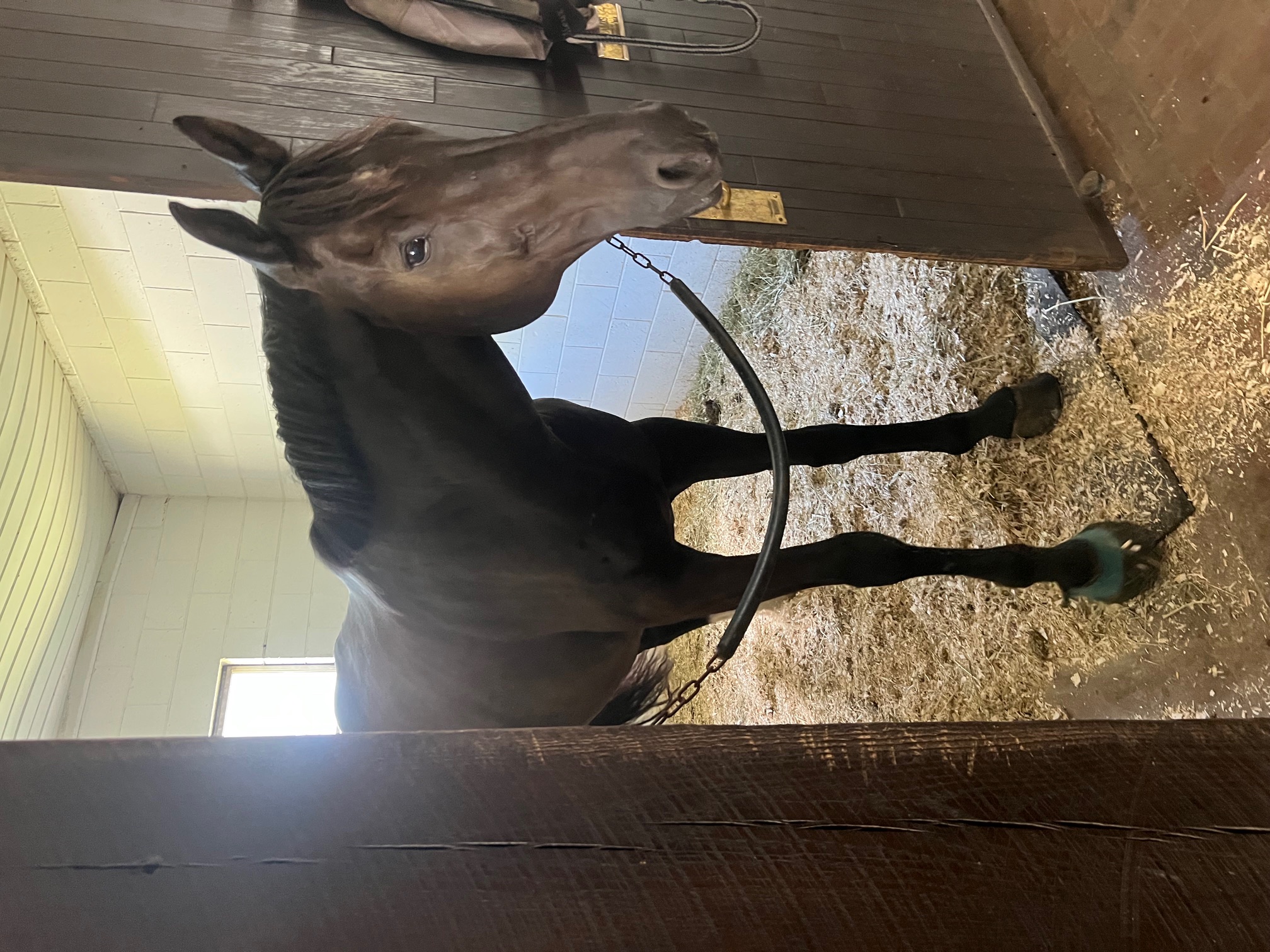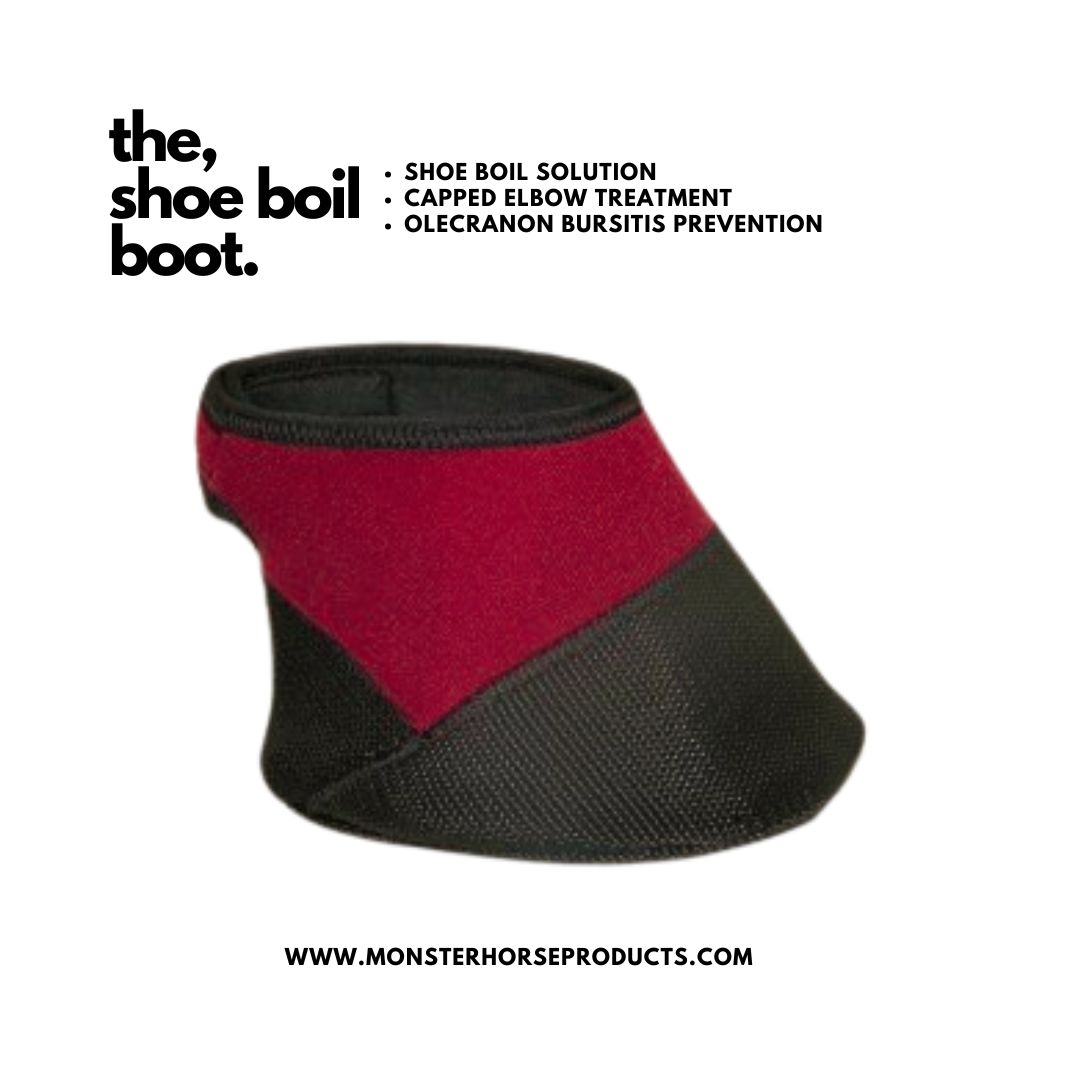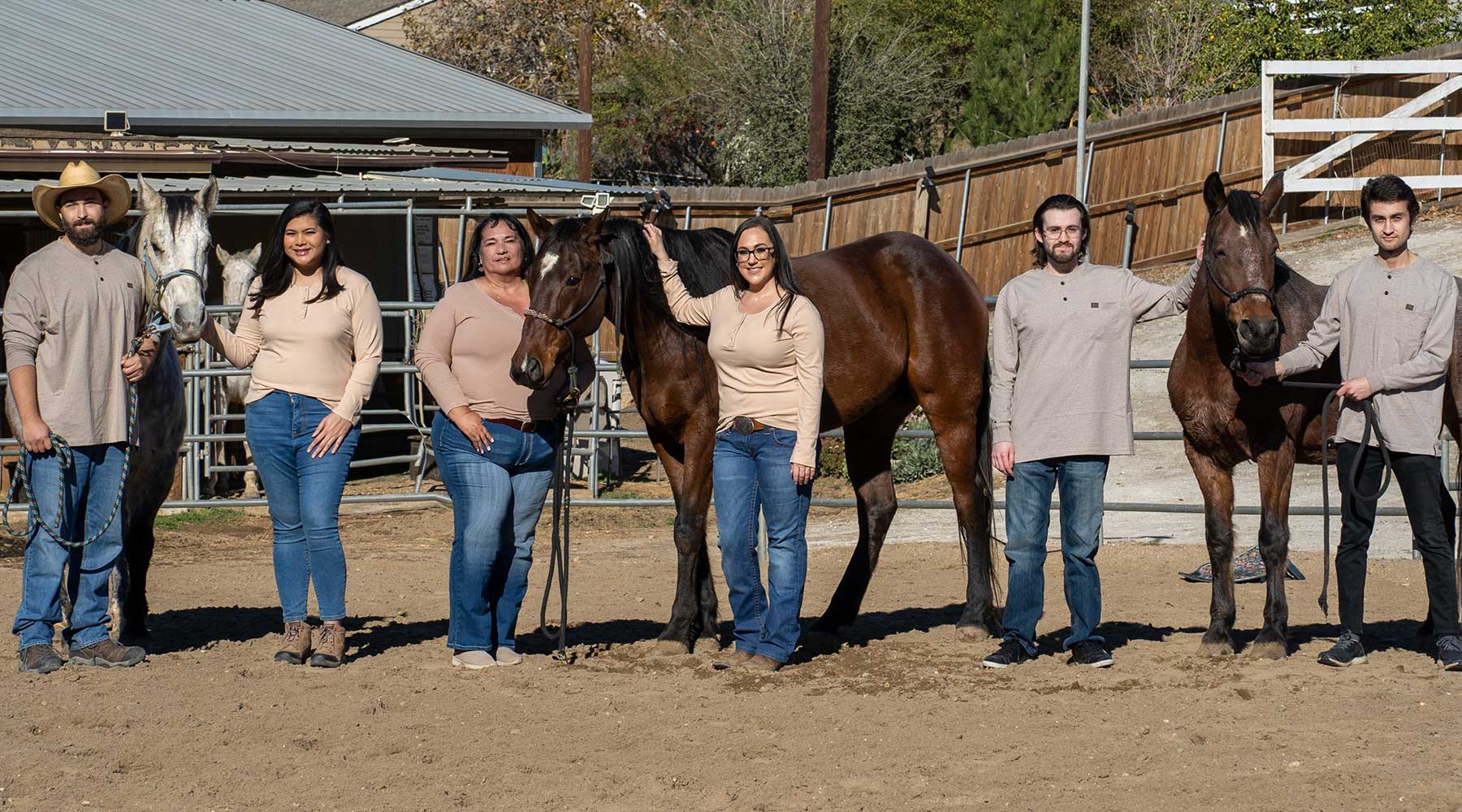Healthy Hooves & Beyond
Monster Featured Friends

Aramis says thank you for the boot.
It fits like a glove, he loves wearing it and the shoe boil is looking under control.
We appreciate all your help Kim.
- Lidiya and Aramis
Tewksbury NJ
A horse’s hooves play a crucial role in its overall health, mobility, and performance. However, hooves are susceptible to various diseases that can cause discomfort, lameness, and long-term complications if left untreated. Understanding the most common hoof diseases, their causes, and the best ways to prevent and treat them is essential for horse owners and caretakers.
1. Thrush
Cause:
Thrush is a bacterial infection that primarily affects the frog of the hoof. It is caused by prolonged exposure to wet, dirty, or unsanitary conditions, allowing bacteria (such as Fusobacterium necrophorum) to thrive.
Symptoms:
-
A strong, foul odor from the hoof
-
Black, tar-like discharge in the grooves of the frog
-
Softening or erosion of the frog tissue
-
Sensitivity or discomfort in severe cases
Prevention and Treatment:
-
Keep stalls, paddocks, and pastures clean and dry
-
Pick out hooves daily to remove dirt and debris
-
Apply antimicrobial treatments like iodine-based solutions, hydrogen peroxide, or commercial thrush treatments
-
In severe cases, a farrier may need to trim away infected tissue
2. White Line Disease (Seedy Toe)
Cause:
White Line Disease (WLD) is caused by fungal or bacterial infections that invade the hoof wall’s inner layers, leading to separation and structural weakness. It often starts with small cracks or separations that allow pathogens to enter.
Symptoms:
-
Crumbling, chalky, or powdery hoof wall
-
Hoof wall separation, appearing as hollow or detached areas
-
Lameness in advanced cases
-
A hollow sound when tapping the hoof wall
Prevention and Treatment:
-
Maintain regular farrier care to trim and balance the hooves
-
Keep hooves dry and avoid prolonged exposure to mud or moisture
-
Remove infected hoof material and apply antifungal or antibacterial treatments
-
In severe cases, therapeutic shoeing or hoof resections may be necessary

3. Hoof Abscesses
Cause:
Hoof abscesses occur when bacteria enter the hoof through cracks, punctures, or weak areas in the white line, leading to localized infection and pus buildup. The infection creates pressure, causing sudden and severe pain.
Symptoms:
-
Sudden, severe lameness in one hoof
-
Heat and increased digital pulse in the affected hoof
-
Swelling around the coronary band or pastern
-
A black dot or drainage hole if the abscess bursts
Prevention and Treatment:
-
Keep hooves clean and dry
-
Remove sharp objects from pastures and stalls that could cause punctures
-
Soak the hoof in warm water and Epsom salt to draw out infection
-
A veterinarian or farrier may need to open and drain the abscess
-
Bandage and apply antiseptic treatments until healed
4. Laminitis
Cause:
Laminitis is a serious inflammatory condition affecting the laminae, the tissues that connect the hoof wall to the coffin bone. It can be triggered by metabolic disorders (e.g., Equine Metabolic Syndrome or Cushing’s Disease), overeating rich pasture, excessive weight-bearing, or systemic illnesses.
Symptoms:
-
Reluctance to move or shifting weight between front feet
-
Standing in a "rocked back" position to relieve pressure
-
Hoof heat and a strong digital pulse
-
Pain or lameness, especially when turning or walking on hard ground
Prevention and Treatment:
-
Maintain a healthy diet and limit access to lush pasture
-
Provide regular farrier care to maintain hoof balance
-
Use anti-inflammatory medications as prescribed by a veterinarian
-
Provide deep bedding and corrective shoeing for support
-
In severe cases, long-term management and specialized shoeing may be necessary
5. Navicular Syndrome
Cause:
Navicular syndrome involves degeneration or inflammation of the navicular bone and surrounding soft tissues, often due to poor hoof conformation, excessive strain, or genetic predisposition.
Symptoms:
-
Intermittent lameness that worsens with exercise
-
Shortened stride and toe-first landing
-
Reluctance to turn or work on hard surfaces
-
Heel pain when pressure is applied
Prevention and Treatment:
-
Maintain proper hoof balance through regular farrier care
-
Use supportive or corrective shoeing to reduce strain on the navicular region
-
Manage pain with non-steroidal anti-inflammatory drugs (NSAIDs)
-
Consider advanced therapies like bisphosphonates, shockwave therapy, or stem cell treatments
-
Severe cases may require surgery (e.g., a neurectomy)
6. Canker
Cause:
Canker is a rare but serious bacterial infection of the frog, sole, and hoof wall, often linked to unhygienic conditions. It causes abnormal tissue growth and can be mistaken for thrush.
Symptoms:
-
Foul-smelling, gray or white overgrowth of tissue in the frog area
-
Soft, spongy, or necrotic hoof tissue
-
Sensitivity and lameness in severe cases
Prevention and Treatment:
-
Keep hooves clean and dry
-
Remove infected tissue through debridement
-
Apply topical antimicrobial and astringent treatments
-
In persistent cases, systemic antibiotics may be needed
7. Quittor
Cause:
Quittor is an infection of the collateral cartilage of the hoof, often resulting from deep puncture wounds or trauma. It leads to chronic abscess formation and drainage.
Symptoms:
-
Swelling and abscess formation near the coronary band
-
Persistent drainage from the hoof
-
Lameness and pain in the affected hoof
Prevention and Treatment:
-
Prevent hoof trauma and puncture wounds
-
Treat infections early to prevent deep tissue involvement
-
Surgical removal of infected cartilage may be required in severe cases
Conclusion
Hoof health is vital for a horse’s overall well-being. Regular hoof maintenance, a clean environment, and early intervention can prevent many common hoof diseases. If you notice signs of discomfort, lameness, or hoof abnormalities, consult your veterinarian and farrier for prompt diagnosis and treatment. Proper hoof care will ensure your horse remains sound, comfortable, and able to perform at its best.
Understanding Shoe Boils in Horses
Shoe boils, also known as olecranon bursitis or capped elbows, occur when repeated trauma to a horse’s elbow causes swelling, irritation, and sometimes fibrous thickening of the bursa—a fluid-filled sac that cushions the joint.
If left untreated, shoe boils can lead to discomfort, reduced mobility, and, in severe cases, infection. The good news? With early intervention and proper preventive care, you can manage and even prevent shoe boils effectively.
Causes of Shoe Boils in Horses
Shoe boils develop due to repeated pressure or impact on the horse’s elbow. The most common causes include:
- Hoof or Shoe Contact – When a horse lies down, the heel of its hoof or shoe can rub against the elbow, causing trauma.
- Hard Stall Floors – Horses lying on rough, hard, or thinly bedded surfaces are more prone to elbow irritation.
- Frequent Lying Down – Older horses, larger breeds, or horses recovering from injuries tend to lie down more often, increasing their risk.
- Ill-Fitted or Overgrown Shoes – Shoes with long heels or sharp edges can exacerbate pressure against the elbow.
Recognizing the Symptoms of Shoe Boils
Early detection is crucial to prevent complications. Look for:
- Soft swelling or lump behind the elbow
- Tenderness or irritation when touched
- Skin thickening or hair loss over time
- Fluid-filled sac that may harden if untreated
- Signs of infection such as heat, redness, or discharge
If you notice these signs, acting quickly can prevent the need for surgical intervention.

Shoe Boil Treatment: How to Heal & Manage Olecranon Bursitis
The key to treating shoe boils is preventing further trauma while reducing swelling and discomfort. Here’s how:
1️⃣ Protect the Elbow with a Shoe Boil Boot
The Monster Shoe Boil Boot is an essential tool for preventing and treating shoe boils. Designed with durable padding, this boot creates a protective barrier between the hoof and the elbow, reducing impact and irritation.
Shop the Monster Shoe Boil Boot here: Monster Horse Products
2️⃣ Improve Stall Bedding
Deep, cushioned bedding (such as shavings, straw, or rubber mats) reduces pressure on the elbows when lying down. Ensure stalls are well-maintained and free from hard surfaces.
3️⃣ Apply Cold Therapy
For recent or inflamed shoe boils, applying cold compresses or ice packs can help reduce swelling. Cold therapy is most effective in the first 48 hours after noticing a new lump.
4️⃣ Use Anti-Inflammatory Medications
Veterinarians may recommend Bute (phenylbutazone) or Banamine to control pain and inflammation. Always follow professional guidance when administering medications.
5️⃣ Consider Topical Treatments
Some horse owners find relief using topical DMSO (dimethyl sulfoxide) or antibacterial ointments to reduce swelling and promote healing.
6️⃣ Consult a Farrier for Shoeing Adjustments
If your horse’s shoeing contributes to elbow trauma, ask your farrier about trimming or rounding the heels to prevent contact with the elbow.
7️⃣ Drainage & Injections for Severe Cases
In chronic or severe cases, your veterinarian may:
- Drain excess fluid from the bursa
- Inject corticosteroids to reduce inflammation
- Prescribe antibiotics if infection is present
- Recommend surgical removal of the bursa if necessary
How to Prevent Shoe Boils in Horses
The best treatment is prevention! Here’s how to stop shoe boils before they start:
- Use Protective Gear – Invest in a Monster Shoe Boil Boot or padded ring boots to prevent trauma.
- Provide Deep Bedding – Keep stalls well-bedded to cushion elbows.
- Check Shoeing Regularly – Work with your farrier to adjust the heels of your horse’s shoes if needed.
- Monitor for Early Signs – Catching swelling early prevents long-term damage.
FAQs About Shoe Boil Treatment & Prevention
Can a shoe boil go away on its own?
Not usually. Shoe boils tend to worsen over time without intervention. Early treatment and protective gear can prevent complications.
Should I drain a shoe boil at home?
No! Draining a shoe boil without veterinary supervision can lead to infection. Always consult a vet before attempting any drainage.
What’s the best way to prevent shoe boils?
Using a Monster Shoe Boil Boot, ensuring deep bedding, and checking shoe fit regularly are the top prevention methods.
Final Thoughts: Keep Your Horse Comfortable & Healthy
Shoe boils are common but highly preventable with the right protective measures. Whether you’re treating an existing shoe boil or preventing one, Monster Horse Products offers premium protective gear designed to keep your horse comfortable and sound.
Shop for shoe boil boots & leg protection here: Monster Horse Products
Have questions? Contact us today!
Feeding, Exercise & Health Tips for Equine Weight Control
Maintaining a healthy weight in horses is essential for preventing metabolic disorders, reducing joint strain, and optimizing performance. Whether your horse is prone to obesity or struggles to gain weight, understanding the right balance of nutrition, exercise, and health monitoring is key.
In this guide, we’ll cover:
How to determine if your horse is overweight or underweight
The best feeding strategies for weight control
Exercise plans for healthy weight maintenance
Health conditions affecting equine weight
Expert-approved solutions from Monster Horse Products
Why Weight Management Is Crucial for Horse Health
Horses in poor body condition—whether too thin or too heavy—are at a higher risk for laminitis, joint inflammation, metabolic disorders, and reduced performance. Proper weight management ensures:
✔ Stronger hooves & joints for active movement
✔ Balanced digestion with the right diet and roughage
✔ Longer lifespan & overall well-being
How to Determine If Your Horse Is Overweight or Underweight
Understanding your horse’s ideal weight starts with assessing Body Condition Score (BCS) on a scale of 1 to 9 (with 1 being extremely thin and 9 being obese).
Signs of an Overweight Horse:
🚩 Fat deposits around the neck, withers, and tailhead
🚩 Lack of visible ribs and difficulty feeling them through fat
🚩 Reduced energy levels & sluggish movement
Signs of an Underweight Horse:
🚩 Visible ribs, hip bones, and spine
🚩 Lack of muscle tone despite adequate feed intake
🚩 Lethargy and difficulty maintaining body heat in cold weather
Best Feeding Practices for Weight Control
For Overweight Horses: Low-Calorie, High-Fiber Diet
🟢 Feed more roughage (grass hay over alfalfa) to regulate metabolism
🟢 Limit grains & sugars to prevent insulin resistance
🟢 Use slow feeders to mimic natural grazing behavior
🟢 Ensure proper hydration to aid digestion and metabolism

For Underweight Horses: Safe Weight Gain Strategies
🟡 Increase forage intake with quality hay & pasture
🟡 Add healthy fats like rice bran or flaxseed oil
🟡 Introduce high-fiber concentrates gradually
🟡 Consider weight gain supplements for extra calories
➡ Related: Best Supplements for Joint Support in Performance Horses
Exercise & Activity for Maintaining a Healthy Weight
Regular exercise plays a vital role in preventing obesity and improving metabolic function in horses.
🐎 Overweight Horses:
- Low-impact movement like lunging and hand-walking
- Short but frequent workouts to avoid strain
- Cavaletti poles to encourage engagement
🐎 Underweight Horses:
- Gradual strength-building workouts
- Balanced riding sessions with proper warm-up and cool-down
- Joint support boots to prevent injuries
➡ Read: Why Hoof Protection Matters for Active Horses
Health Conditions Affecting Horse Weight
Some weight issues stem from underlying medical conditions that require veterinary care.
⚠ Equine Metabolic Syndrome (EMS) – Causes obesity, insulin resistance, and laminitis. Requires a low-starch, high-fiber diet.
⚠ Cushing’s Disease (PPID) – Leads to muscle loss and a potbelly appearance. Treatment involves regulated feeding and medication.
⚠ Gastric Ulcers – Can lead to poor appetite and weight loss. Managed with gut supplements and forage-based diets.
How Monster Horse Products Can Help
At Monster Horse Products, we believe in practical solutions to help horse owners manage their horse’s health effectively. Our innovative gear is designed to support equine joint health, prevent injuries, and keep horses active and comfortable.
✔ Monster Multipurpose Barn Booties – Cushions hooves for horses on hard surfaces, reducing joint strain.
✔ Monster Medical Leg Wraps – Antimicrobial protection for leg wounds & inflammation.
✔ Monster Shoe Boil Boot – Supports weight distribution and prevents capped elbows.
Final Thoughts
Maintaining your horse’s weight is a balance of proper nutrition, exercise, and proactive care. Whether you’re trying to slim down an overweight horse or help an underweight horse gain strength, small adjustments to diet and routine can make a huge difference.
Stay ahead of weight-related health issues by incorporating expert-recommended feed practices, exercise routines, and protective gear from Monster Horse Products.
